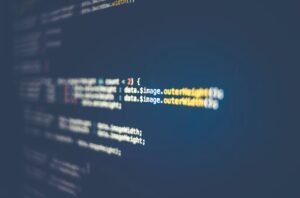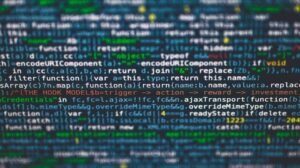Generative Art Flow Fields
Generative art uses algorithms and computer code to create unique, often unpredictable, and visually stunning art forms. One popular technique within generative art is the use of flow fields—a computational method that creates dynamic patterns and movements. Flow fields provide artists with a powerful tool to generate mesmerizing and organic visuals that captivate audiences.
Key Takeaways:
- Generative art incorporates algorithms and computer code to create diverse and captivating visual art.
- Flow fields are a popular technique in generative art that generates dynamic patterns and movements.
- Flow fields offer artists the ability to create unique and mesmerizing visuals.
**Flow fields** are created by assigning vectors to each point in a 2D or 3D space. These vectors indicate the direction and speed at which particles, lines, or other visual elements move within the space. By manipulating the vectors, artists can control the flow and movement of the elements in their artwork, resulting in beautiful and complex patterns. *Using mathematical algorithms and computational techniques, flow fields allow artists to create constantly evolving and organic visuals that are often difficult to reproduce manually.*
There are several ways in which flow fields can be manipulated and experimented with to generate different artistic effects. In some cases, artists may apply external forces to the flow field, such as attracting or repelling particles. This can lead to the formation of clusters or the dispersion of elements across the canvas. Artists can also manipulate the vectors directly, introducing turbulence or changing the speed of movement to create dynamic and dramatic effects.
**Table 1**: Examples of Flow Field Effects
| Effect | Description |
|---|---|
| Spiral | A swirl of particles moving towards or away from a central point. |
| Whirlpool | A rotating flow that creates a vortex-like motion. |
| Chaotic Lines | Randomized vector movements resulting in intricate and unpredictable patterns. |
Flow fields can be implemented using various programming languages and libraries. Some popular frameworks for generative art, such as Processing and p5.js, provide built-in functions for creating and manipulating flow fields. These frameworks simplify the coding process, allowing artists to focus on the creative aspect of their artwork rather than the technical details.
- Processing: A versatile programming language specifically designed for visual arts and generative design.
- p5.js: A JavaScript library that makes it easy to create interactive graphics and animations.
- OpenFrameworks: A C++ toolkit widely used in creative coding and generative art.
**Table 2**: Programming Frameworks for Flow Field Generation
| Framework | Language |
|---|---|
| Processing | Java |
| p5.js | JavaScript |
| OpenFrameworks | C++ |
Generative art flow fields have gained popularity in various creative fields. They are widely used in digital art, interactive installations, music videos, and even in advertising to create captivating and innovative visuals. Artists and designers are continually pushing the boundaries of flow field techniques, exploring new aesthetics and experimenting with different parameters to achieve unique and striking results. *The possibilities with generative art flow fields are truly endless, offering artists an exciting and ever-evolving medium to express their creativity.*
**Table 3**: Applications of Flow Fields in Different Creative Fields
| Field | Application |
|---|---|
| Digital Art | Creating dynamic and interactive artworks for digital platforms. |
| Installations | Designing immersive and engaging experiences for physical spaces. |
| Music Videos | Enhancing visual storytelling and syncing visuals with audio. |
Generative art flow fields offer artists a unique and powerful tool for creating captivating and ever-evolving visuals. With their ability to generate intricate patterns and dynamic movements, flow fields open up a world of creative possibilities. Whether you’re a digital artist, designer, or simply an art enthusiast, exploring flow fields can provide a fascinating and rewarding artistic experience.

Common Misconceptions
Generative Art Flow Fields
Generative art flow fields, often referred to as flow-based art or algorithmic art, are a form of artwork that utilizes mathematical algorithms and computational systems to create visually captivating pieces. However, some common misconceptions persist regarding this topic.
- Generative art flow fields are purely random and lack control
- Flow-based art does not require any human intervention
- Generative art flow fields are limited to digital mediums
Random and Lacking Control
One common misconception surrounding generative art flow fields is that they are purely random and lack control from the artist. Although the algorithms utilized in this form of art can introduce randomness, the final output is often carefully designed and controlled by the artist. Artists have the ability to tweak parameters, adjust settings, and manipulate variables to achieve the desired visual outcomes.
- Artists exercise creative control over the generation process
- Parameters and variables can be adjusted to influence the final output
- The artist’s vision guides the algorithmic generation of flow fields
No Human Intervention
Another misconception is that generative art flow fields do not require any human intervention and are solely produced by computer algorithms. While algorithms play a significant role, the artist actively engages in the creation process. Artists provide the initial input, define the boundaries, and make decisions about the aesthetics and compositions of the flow fields.
- Artists are involved in the selection of parameters and algorithms
- Human input shapes the overall direction and aesthetics of the artwork
- Artists make decisions about composition and boundary constraints
Limitations to Digital Mediums
Some individuals believe that generative art flow fields are limited to digital mediums, such as computer screens or projections. However, this form of art can be expressed and exhibited in various ways. From printed artworks to interactive installations, flow-based art can be translated into physical forms to engage viewers in unique and tangible experiences.
- Generative art can be printed on various materials, such as canvas or paper
- Flow fields can be presented in the form of physical sculptures or installations
- Artists can explore combining digital and analog mediums to create hybrid forms of flow-based art
Simply Generated, Lacking Depth
Some misconceptions suggest that generative art flow fields are simply generated by algorithms and lack depth or meaning compared to traditional approaches. However, flow-based art can create complex and visually rich compositions that evoke emotions and provoke thoughts. Artists can infuse their personal perspectives, narratives, and intentions into the algorithms, resulting in artworks that possess depth and substance.
- Generative art flow fields can offer aesthetic complexity and visual depth
- Artists can imbue their artworks with personal narratives and intentions
- Flow-based art can evoke emotions and stimulate intellectual engagement

Generative Art Flow Fields
Generative art is a form of art that is created through algorithms and autonomous systems. Flow fields, in particular, are widely used in generative art to simulate the movement of particles in a fluid-like manner. This article explores various aspects of flow fields and their role in creating visually captivating generative art pieces.
Flow Field Types
There are several types of flow fields that artists use to create unique visual effects. Here are some examples:
| Flow Field | Description |
|---|---|
| Uniform Flow Field | A constant velocity in a single direction. |
| Radial Flow Field | Motion radiating outward from a central point. |
| Turbulent Flow Field | Chaotic, irregular patterns of particle movement. |
The Mathematics Behind Flow Fields
Flow fields are based on mathematical principles and equations that determine the behavior of particles within the system. Here are some key mathematical concepts involved:
| Concept | Description |
|---|---|
| Vector Field | An assignment of a vector to each point in a space. |
| Differential Equations | Equations involving derivatives that describe the rate of change of a function. |
| Vector Operations | Mathematical operations on vectors, such as addition and scalar multiplication. |
Applications of Flow Fields
Flow fields find applications in various fields beyond generative art. Here are some practical applications:
| Application | Description |
|---|---|
| Fluid Dynamics | Simulating the behavior of fluids in engineering and scientific analyses. |
| Animation | Creating realistic motion effects in computer-generated animations. |
| Game Development | Designing natural-looking movements and interactions within game environments. |
Artistic Examples of Flow Fields
Artists have embraced flow fields as a medium for creating stunning visual experiences. Here are some notable artistic examples:
| Artist | Description |
|---|---|
| Casey Reas | Creates mesmerizing generative art installations using flow fields and custom software. |
| Marija Tiurina | Uses flow fields to depict swirling patterns in her vibrant digital paintings. |
| Aaron Penne | Employing flow fields to generate intricate patterns and textures in his digital sculptures. |
Benefits of Using Flow Fields
Artists choose to incorporate flow fields into their work for various reasons. Here are some benefits:
| Benefit | Description |
|---|---|
| Visual Complexity | Flow fields add intricate and visually captivating patterns to generative art pieces. |
| Dynamic Movement | The simulation of particle movement creates a sense of dynamic motion in the artwork. |
| Unpredictability | Flow fields introduce an element of randomness, making each creation unique. |
Limitations of Flow Fields
While flow fields offer numerous advantages, they also have certain limitations. Here are some considerations:
| Limitation | Description |
|---|---|
| Computational Intensity | Complex flow fields may require significant computational resources to generate. |
| Artistic Control | Artists may not have full control over every aspect of the particle movement. |
| Learning Curve | Mastering the mathematical concepts and software tools can be challenging for some artists. |
Conclusion
Flow fields play a vital role in the creation of mesmerizing generative art pieces. By simulating particle movement through mathematical algorithms, these fields produce visually complex and dynamic artworks. Artists from various fields harness the power of flow fields to enhance their creative expressions, taking advantage of its unpredictable nature and aesthetic appeal. Despite a few limitations, flow fields continue to push the boundaries of art and technology, offering endless possibilities for artistic exploration.
Frequently Asked Questions
Q: What is generative art?
A: Generative art refers to artwork that is created using a set of rules or algorithms, usually with the assistance of a computer program. It involves the use of random or predefined elements to produce unique and ever-changing artworks.
Q: What are flow fields in generative art?
A: Flow fields in generative art are visual representations of vector fields, which are fields in which each point has a defined direction and magnitude. In flow fields, these vectors are used to generate patterns or motions, creating dynamic artworks.
Q: How are flow fields created in generative art?
A: Flow fields can be created using various techniques and algorithms. Some common methods include cellular automata, particle systems, fluid simulations, and mathematical functions. Artists often experiment and combine different approaches to achieve the desired effect.
Q: Can flow fields be interactive?
A: Yes, flow fields can be interactive in generative art. Artists can allow users to manipulate certain parameters or elements within the flow field, such as the direction or velocity of the vectors, to create personalized experiences and explore different visual outcomes.
Q: What programming languages can be used to create generative art flow fields?
A: There are several programming languages suitable for creating generative art flow fields, including but not limited to: Processing (Java-based), p5.js (JavaScript-based), Python (using libraries like Pygame or Processing.py), and openFrameworks (C++-based). The choice of programming language often depends on personal preference and the desired functionality.
Q: Are there any tools or software specifically designed for creating generative art flow fields?
A: Yes, there are various tools and software available specifically designed for creating generative art flow fields. Examples include Processing, which provides a flexible and beginner-friendly environment, and openFrameworks, a powerful toolkit for creative coding. Additionally, there are online platforms like Generative Artistry and Codepen, where artists can share and explore generative art creations.
Q: Can generative art flow fields be rendered in different mediums?
A: Absolutely! Generative art flow fields can be rendered in various mediums, including digital displays, prints, sculptures, and even interactive installations. The choice of medium depends on the artist’s vision and the desired impact of the artwork.
Q: Are there any notable artists known for creating generative art flow fields?
A: Yes, there are several notable artists who have made significant contributions to the field of generative art flow fields. Some prominent examples include Casey Reas, the co-creator of Processing, Robert Hodgin, known for his mesmerizing digital artworks, and Marius Watz, who explores generative processes in his vibrant creations.
Q: Can anyone create generative art flow fields, or is it only for experienced programmers?
A: Generative art flow fields can be created by anyone with a passion for art and a willingness to learn. While some familiarity with programming concepts can be helpful, many resources and tutorials are available online to assist beginners in creating their own generative art flow fields. Practice, experimentation, and a curiosity to explore different possibilities are keys to success.
Q: Where can I learn more about generative art and flow fields?
A: There are numerous online resources available to learn more about generative art and flow fields. Websites like Generative Artistry, CreativeApplications.Net, and books such as “Generative Design” by Hartmut Bohnacker, Benedikt Gross, Julia Laub, and Claudius Lazzeroni are highly recommended for diving deeper into the subject.




